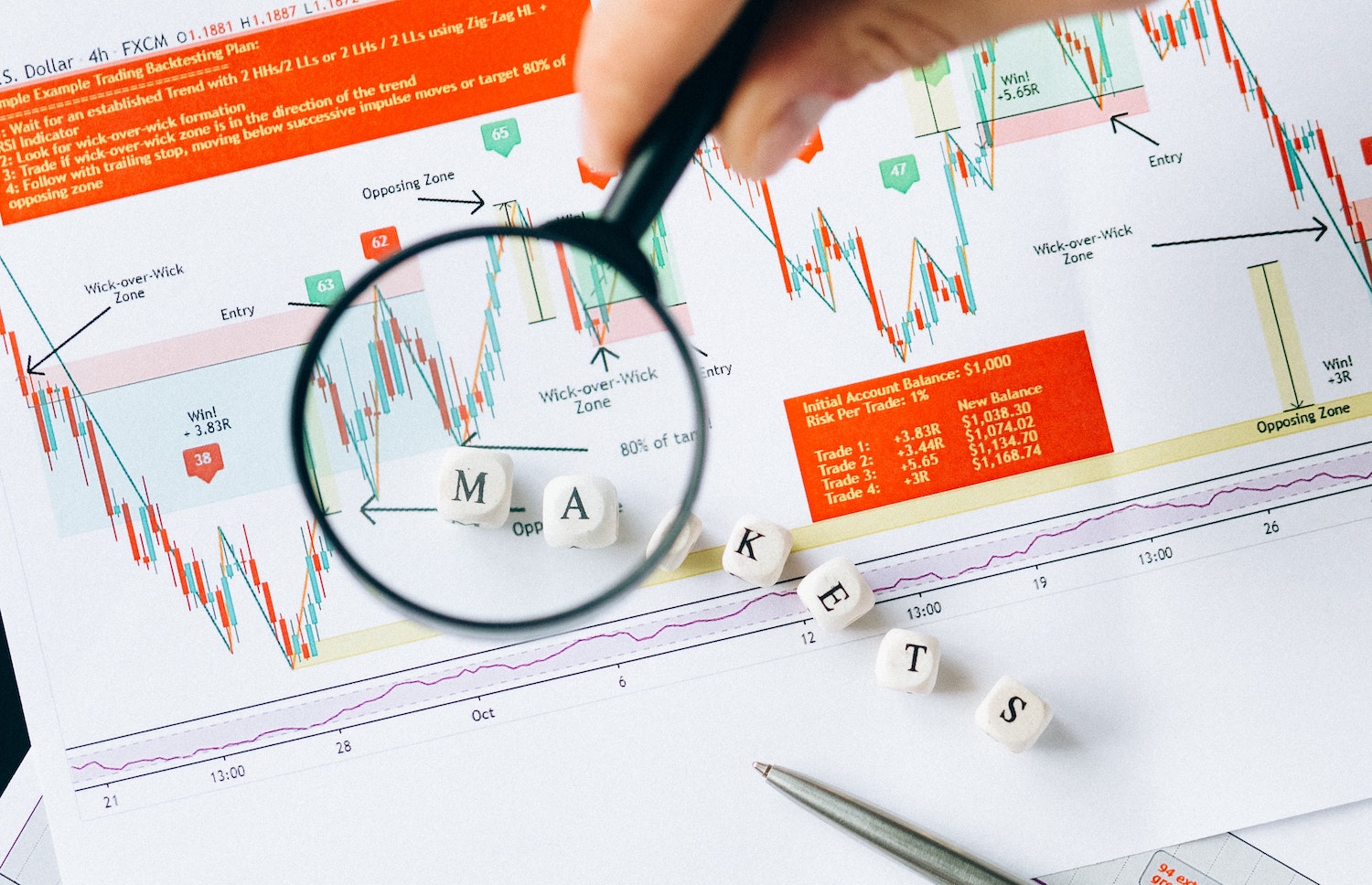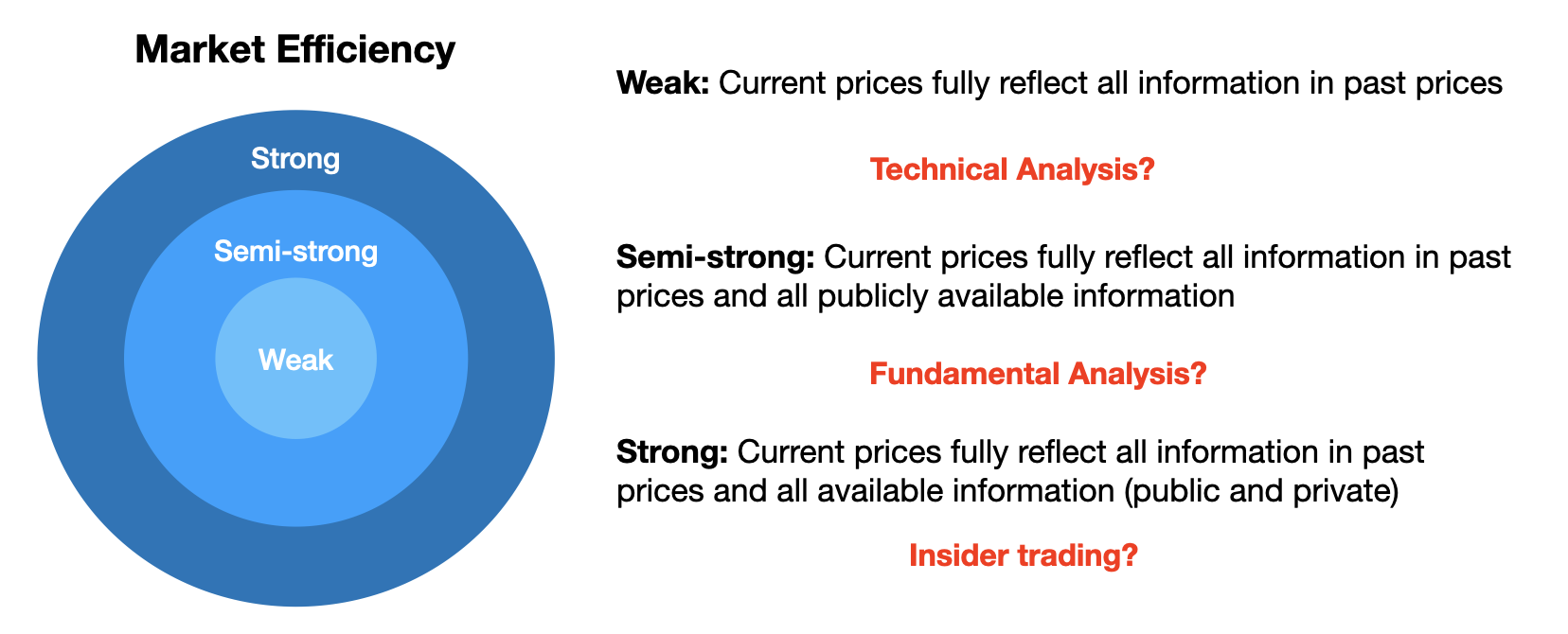
Introduction
Welcome to the sixth article of our finance theory series, focused on investment. In the previous article, we talked about asset pricing models, such as the Capital Asset Pricing Model (CAPM) and other multi-risk factor models. We learned that there is an ongoing debate in finance about whether the models are correct. This discussion is hard to settle and has split finance scholars into different schools of thought. In this article, we'll discuss market efficiency, a key component of this debate, in detail.
Market Efficiency
The concept of market efficiency assumes that assets are priced fairly, reflecting their true values based on all available information. Assessing market efficiency involves comparing theoretical asset values from a model to actual market prices. If they match, the assets are considered fairly priced, and the market is efficient. If they differ significantly, it suggests the assets are mispriced and arbitrage trading has failed to correct these errors, therefore the market is inefficient.
μmkt obs = μmodel → Efficient
μmkt obs ≠ μmodel → Inefficient
It's not that simple! As I mentioned before, this is a joint hypothesis problem, because different models for pricing assets will give different results. We can't tell for sure whether the market is actually inefficient or our model is incorrect. This issue has split finance scholars into two schools of thought: a rational school of thought, which tries to model financial markets based on rational human behavior; and a behavioral school of thought, which says that human errors and biases can persist over time, influencing market dynamics.
Rational → We need a new model! (Ex: Fama-French)
Behavioral → People make errors when setting prices and arbitrage trading fails to correct them.
The studies on irrational behavior and its influence in the economy are evolving a lot. In 2017, Richard Thaler, a behavioral economist, won the Nobel Prize in Economic Sciences. And before him, two other behavioral finance scholars also won the same prize. Robert Shiller, in 2013, and Daniel Kahneman, in 2002. Their work has had major influence in economics, from our understanding of the financial markets, to actions we can take to improve public policies. Even Alan Greenspan, the highly respected former chairman of the US Federal Reserve admitted to Congress in 2008 that the crisis had shown a flaw in his conceptual framework of the world. The model did not account for the irrational behavior exposed with the crisis.
You've seen how emotions like fear or greed can lead to irrational behavior in bear and bull markets, but quantifying and modeling these behaviors consistently remains challenging. For example, we briefly mentioned market momentum when, in the previous article of this series, we talked about multi-factor models. Some studies suggest that in the short term, we underreact to information. In the market, that means winner stocks will tend to keep winning, whereas loser stocks will tend to keep losing. This persistence or momentum could be exploited. Other studies say that over a longer holding period, there will be a reversal of this effect, so the winners will eventually lose and losers will win. This is called a contrarian approach.
Even though there is some evidence that underreaction and overreaction exist in the market, they are hard to exploit. The trading strategies might be difficult to execute or too. The discounts may also widen before they narrow. Behavioral finance is still an evolving field, and the future may hold more insights into modeling irrational behavior.
Let's take a simple and qualitative approach, segmenting market efficiency into tiers, which can help us understand some of the active investing strategies available. Let's define three increasing levels of market efficiency: weak, semi-strong and strong.
If we say that the market efficiency is weak, current prices fully reflect all the information incorporated in past prices. In this case, it's hard to use technical analysis tools that look at past prices for a stock to predict what tomorrow's price will be.
If market efficiency is semi-strong, all current prices fully reflect information from past prices and from all the publicly available information. If that's statement is true, it's hard to find mispriced assets by doing a fundamental analysis of a company.
And finally, if market efficiency is strong, current prices fully reflect all the information from past prices and from both public and private information available. This is obviously not true, and there are numerous cases where people have profited from using private information. But insider trading is also illegal, so it's not a viable option.

Even though we see periods of inefficiency in the market in the short run, it's generally believed that markets have at least semi-strong efficiency over longer periods of time. The rational models that we've discussed are still the best models that we can rely on as individual investors. They are not perfect, but they are close enough.
The short-term mispricing of assets is really hard to exploit! There are many hedge funds and other institutional investors playing this zero-sum game, where one needs to lose for the other to win. Think twice before spending your valuable time and money on short-term trading. Remember, you're competing against players that have a lot more resources than you do. Chances are, you're not going to be on the winning side of that game. In that case, opting for a longer-term investment strategy is probably a wiser choice.
What's Next
In our final article, the seventh of this series, we'll summarize the key takeaways from the material presented and discuss how these insights can empower us to make better investment decisions. If you have comments or feedback about this article, please send us a note at feedback@bearnbull.com. Make sure to also visit BearNBull's website, where you can find more resources to make you a better investor.